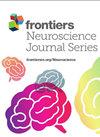Analyzing the transient response dynamics of long-term depression in the mouse auditory cortex in vitro through multielectrode-array-based spatiotemporal recordings
IF 3.2
3区 医学
Q2 NEUROSCIENCES
引用次数: 0
Abstract
In the auditory cortex, synaptic plasticity, including long-term potentiation (LTP) and long-term depression (LTD), plays crucial roles in information processing and adaptation to the auditory environment. Previous rodent studies have shown lifelong cortical map plasticity, even beyond the critical period of development. While thalamocortical synapses exhibit LTD during the critical period, little is known about LTD in the cortico-cortical connections of the adult mouse auditory cortex. Here, we investigated the transient response dynamics of LTD in layers 2–5 of the mouse auditory cortex following tetanic stimulation (TS) to layer 4. To characterize LTD properties, we developed a recording protocol to monitor activity levels at multiple sites, including those more than 0.45 mm from the TS site. This allowed us to distinguish LTD-induced reductions in neural excitability from other types, including neural activity depletion. Our findings revealed that LTD induced in layer 4 persisted for over 40-min post-TS, indicating robust cortico-cortical LTD. Using electrophysiological data and a modified synaptic model, we identified key receptors involved in synaptic plasticity and their effects on response dynamics, proposing a method for studying LTD in the mature mouse auditory cortex. Particularly, by employing a simple dynamical model, we analyzed and discussed the involvement of key receptors during the transient period of LTD. This study expands our understanding of synaptic plasticity in the mature mouse auditory cortex beyond the critical period, potentially informing future treatments for hearing disorders.通过基于多电极阵列的时空记录分析小鼠听觉皮层体外长期抑制的瞬态响应动力学
在听觉皮层中,突触可塑性(包括长期延时(LTP)和长期抑制(LTD))在信息处理和适应听觉环境中起着至关重要的作用。以往的啮齿类动物研究表明,皮层图谱的可塑性是终身的,甚至超过了发育的关键时期。虽然丘脑皮层突触在临界期表现出LTD,但人们对成年小鼠听觉皮层的皮层-皮层连接中的LTD知之甚少。在这里,我们研究了小鼠听皮层 2-5 层在第 4 层受到四次刺激(TS)后的 LTD 瞬时反应动态。为了描述LTD的特性,我们制定了一个记录方案来监测多个部位的活动水平,包括距离TS部位0.45毫米以上的部位。这使我们能够将LTD诱导的神经兴奋性降低与其他类型(包括神经活动耗竭)区分开来。我们的研究结果表明,在第四层诱导的LTD在TS后持续了40多分钟,这表明皮质-皮质LTD具有很强的稳定性。利用电生理数据和改进的突触模型,我们确定了参与突触可塑性的关键受体及其对反应动力学的影响,提出了一种研究成熟小鼠听皮层LTD的方法。特别是,通过使用一个简单的动力学模型,我们分析并讨论了LTD瞬时期关键受体的参与。这项研究拓展了我们对成熟小鼠听皮层临界期之外的突触可塑性的理解,有可能为未来治疗听力障碍提供参考。
本文章由计算机程序翻译,如有差异,请以英文原文为准。
求助全文
约1分钟内获得全文
求助全文
来源期刊

Frontiers in Neuroscience
NEUROSCIENCES-
CiteScore
6.20
自引率
4.70%
发文量
2070
审稿时长
14 weeks
期刊介绍:
Neural Technology is devoted to the convergence between neurobiology and quantum-, nano- and micro-sciences. In our vision, this interdisciplinary approach should go beyond the technological development of sophisticated methods and should contribute in generating a genuine change in our discipline.
 求助内容:
求助内容: 应助结果提醒方式:
应助结果提醒方式:


